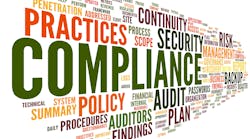I'm frequently contacted by the retail industry and asked about the apprehension of suspected shoplifters and whether or not there is an industry accepted Best Practice. In 1999 the International Association of Professional Security Consultants published what is known as Best Practice #1: Detaining Shoplifting Suspects. There eight Best Practices and note their is a Rational for each practice.
The International Association of Professional Security Consultants, Inc. (IAPSC) has examined the methods of detaining suspects recommended by security professionals and practiced by merchants throughout the United States. IAPSC sets forth below what it believes to be the best practices.
B. BEST PRACTICES
1. Practice. Security persons using best practices detain a suspect only if they have personally seen the suspect approach the merchandise.
Rationale. The suspect may have entered the store with the merchandise already in hand or otherwise on or about their person (say, in a shopping bag or purse).
2. Practice. Security persons using best practices detain a suspect only if they have
personally observed the suspect select or take possession of, or conceal the
merchandise.
Rationale. Security persons trust their own eyes and do not rely on reports by
others.
3. Practice. Security persons using best practices detain a suspect only if they have observed the suspect with the merchandise continually from the point of selection to the point where the suspect has gone beyond the last checkout station without paying for the item. If the surveillance has been broken, or if the person has gotten
rid of the merchandise, the security person breaks off following for that offense, but may continue surveillance if it appears the suspect may commit theft again.
Rationale. The suspect may have "ditched" the merchandise or concealed it. By continually observing the suspect, the security person can observe whether or not the suspect still has the merchandise even if it has been concealed on the suspect's person.
4. Practice. Security persons using best practices detain a suspect outside the store after the suspect has passed the last checkout station and has failed to pay for an item of merchandise. At this point security persons using this best practice immediately investigate to verify or refute a suspect's claim of innocence. Special care and consideration is exercised when merchandise is displayed for sale outside the store, such as garden supplies, sidewalk sales, etc., or which is displayed for sale inside the store, but beyond the last sales point.
Rationale. The security person does not do only what is required to meet the minimum requirements of theft laws. The actions of a suspect make it easier to prove intent to deprive the merchant of an item of merchandise. The farther from the actual taking a suspect is detained, the clearer the offense will appear to a judge or trier of fact. The security person is aware of suspects who might claim they were looking for a matching item or looking for someone to give an opinion on the merchandise before it is purchased. A suspect may, however, offer a logical explanation for actions that initially appeared to the security person to be acts of
shoplifting, but which may require only a limited investigation to verify the suspect's explanation.
5. Practice. Security persons using best practices normally do not "chase" suspects by running inside a store or in shopping centers that are occupied by customers. Exceptions occur when necessary, but only in such areas as parking lots, and then only when few people are in the area and it is unlikely a bystander could get hurt. Such foot pursuits never leave the property on which the store is located. If a suspect runs, the best practice is for the security person to make a mental note of the appearance of the suspect and the merchandise that appears to have been taken; then to make a written report for the store's files.
Rationale. Running may create more problems than it solves. When a suspect runs and a security person chases that person by also running, clients and employees of the store and store employees are endangered more by the combination of two persons running, than by the suspect's running alone. Handicapped clients may be knocked off their feet. Wheel chairs may be overturned. Store employees who may intervene to help may be injured by security persons in pursuit, or by running into counters or display devices, or by slipping on polished floors. When clerks leave their posts, they leave their own merchandise exposed to theft. An exception to this best practice may exist when it is necessary to chase a suspect down in order to protect customers and store employees from ongoing violence by the suspect.
6. Practice. Security persons using best practices treat suspects equally and fairly regardless of a suspect's race, color, creed, gender, or national origin.
Rationale. Anecdotal information suggests certain groups have been marked by some store management and security persons for more surveillance and/or more aggressive anti-shoplifting measures. Color, religious or national dress, gender, and "race" are alleged to have been used to identify persons in such groups. However,
there is no scientific evidence regarding the validity of such "profiling," and this practice is avoided by security persons using best practices. Suspicion of shoplifting depends upon observed actions, not appearance. All law-abiding persons have the right to be treated the same as any other person in the marketplace.
7. Practice. Security persons using best practices do not use weapons such as firearms, batons ("nightsticks"), or restraining devices such as thumb cuffs, "comealongs," mace, or pepper spray in order to apprehend or detain a shoplifting suspect. Stores using best practices occasionally permit the use of handcuffs by security persons whose training has included instruction in the proper use of handcuffs when
necessary to prevent injury to customers or store personnel. Security persons using best practices use handcuffs only when a suspected shoplifter is physically threatening violence or otherwise resisting detention; or there is, in the good judgment of the security person, the risk of imminent serious harm absent their use.
Rationale. There is no merchandise of such value that it warrants a security person's injuring a suspect or an innocent customer. Use of weapons and restraining devices except handcuffs should be left to on-duty public law enforcement officers. If it is not possible to get the suspect's willing cooperation, it is better to let the
suspect go free than to risk injuring a suspect or other customer. Risk avoidance is a factor considered in apprehending and detaining suspects. Because handcuffs are restraining devices, they can be painful if improperly applied and can cause injury. Not all persons caught need restraining. Many people caught shoplifting are humiliated by the incident and are cooperative; hence, in such cases restraint is not
necessary.
8. Practice. Security persons using best practices limit the use of force to "holding" or "restraining" to effect a detention. Security persons using best practices do not use actions such as striking, tackling, sitting on a suspect's body, or any other action that might cause physical injury to the suspect.
Rationale. Use of force is subject to criticism, and assaultive use of force is typically unnecessary and unacceptable in the private sector. However, some holding or restraining may be necessary lest potential thieves learn that by simply resisting they may come and steal with impunity. Use of limited holding or restraining force is sometimes necessary to detain a suspect until police arrive, or to prevent a suspect
from injuring security persons. Under no circumstances should the force applied be that which may result in injury or death to a suspect. No merchandise is of such value as to justify physical injury to a suspect. The better practice is to allow the suspect to depart the premises rather than to cause any injury by the use of force in detaining the suspect. Assuming the suspect can be identified, the merchant can file a complaint; then the public police have the option of apprehending the suspect at a later time.
LEGAL NOTICE/DISCLAIMER: Copyright © 1999 - 2006 The International Association of Professional Security Consultants (IAPSC), All Rights Reserved. The IAPSC makes no representations concerning the guidelines contained herein which are provided for informational and educational purposes only, and which are not to be considered as legal advice. The IAPSC specifically disclaims all liability for any damages alleged to result from or arise out of any use or misuse of these guidelines.
Curtis Baillie - Security Consulting Strategies

